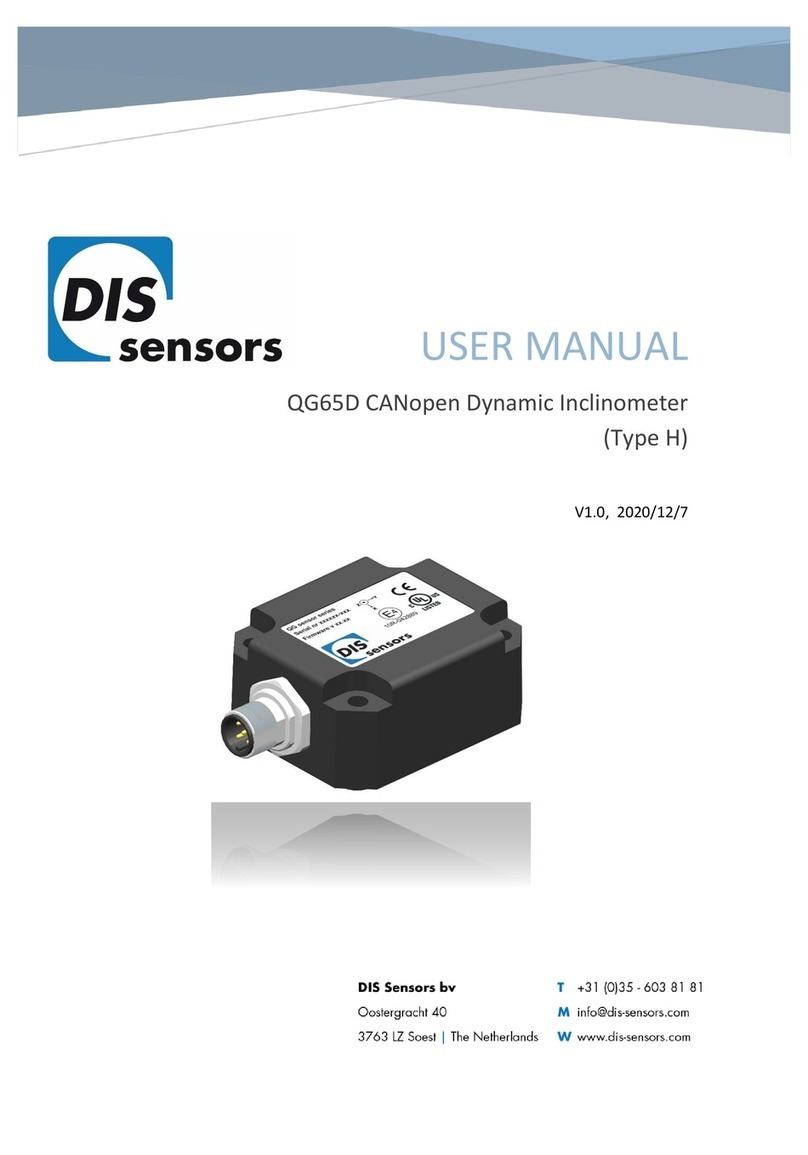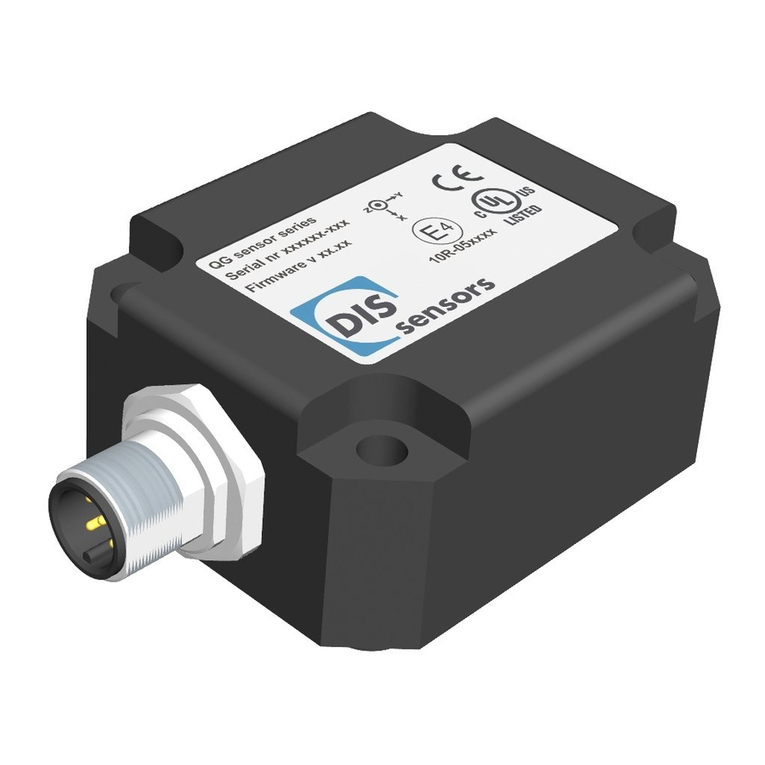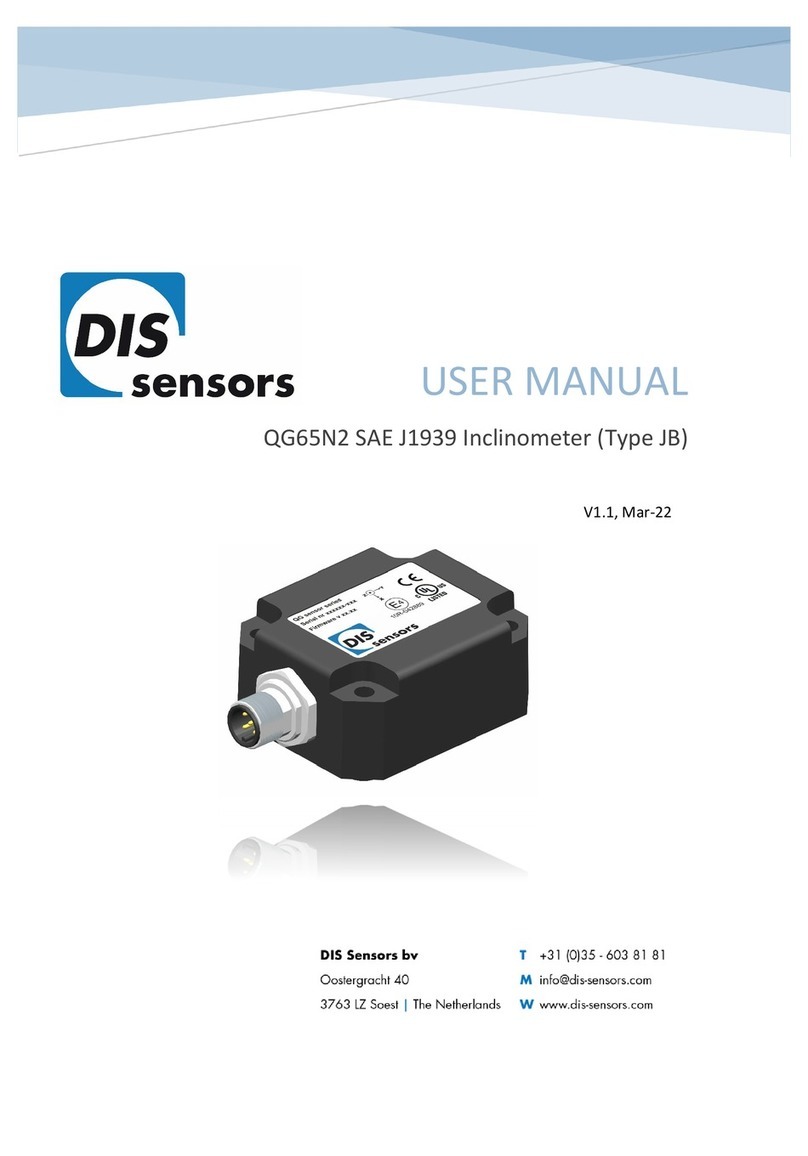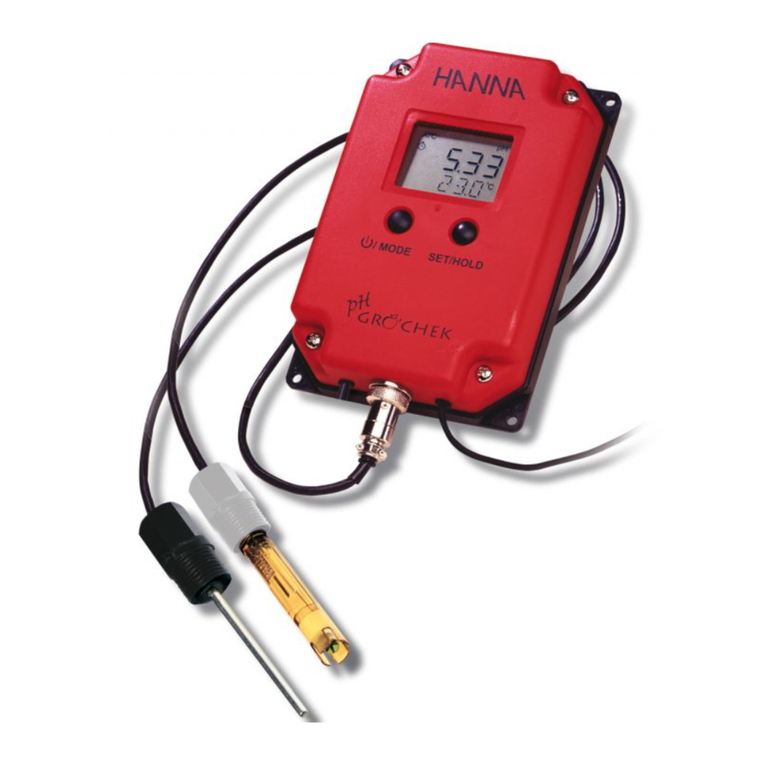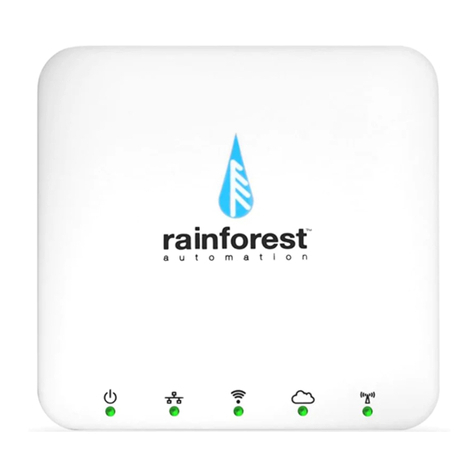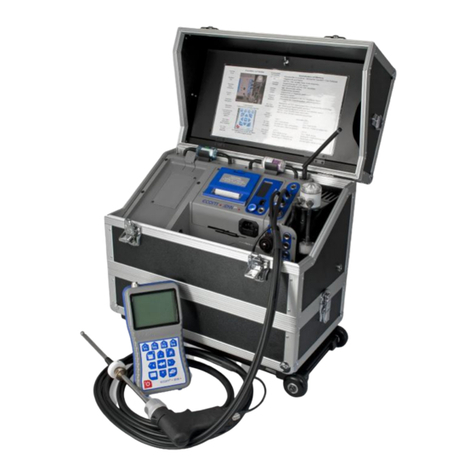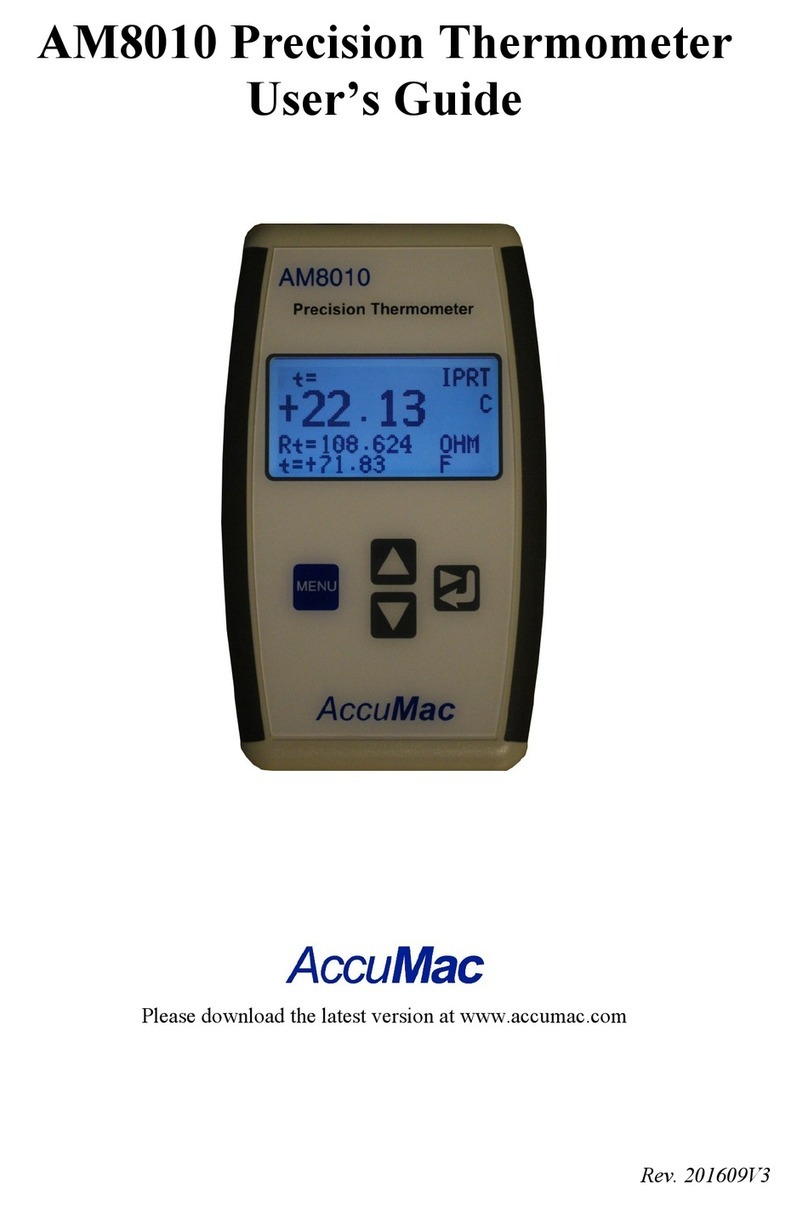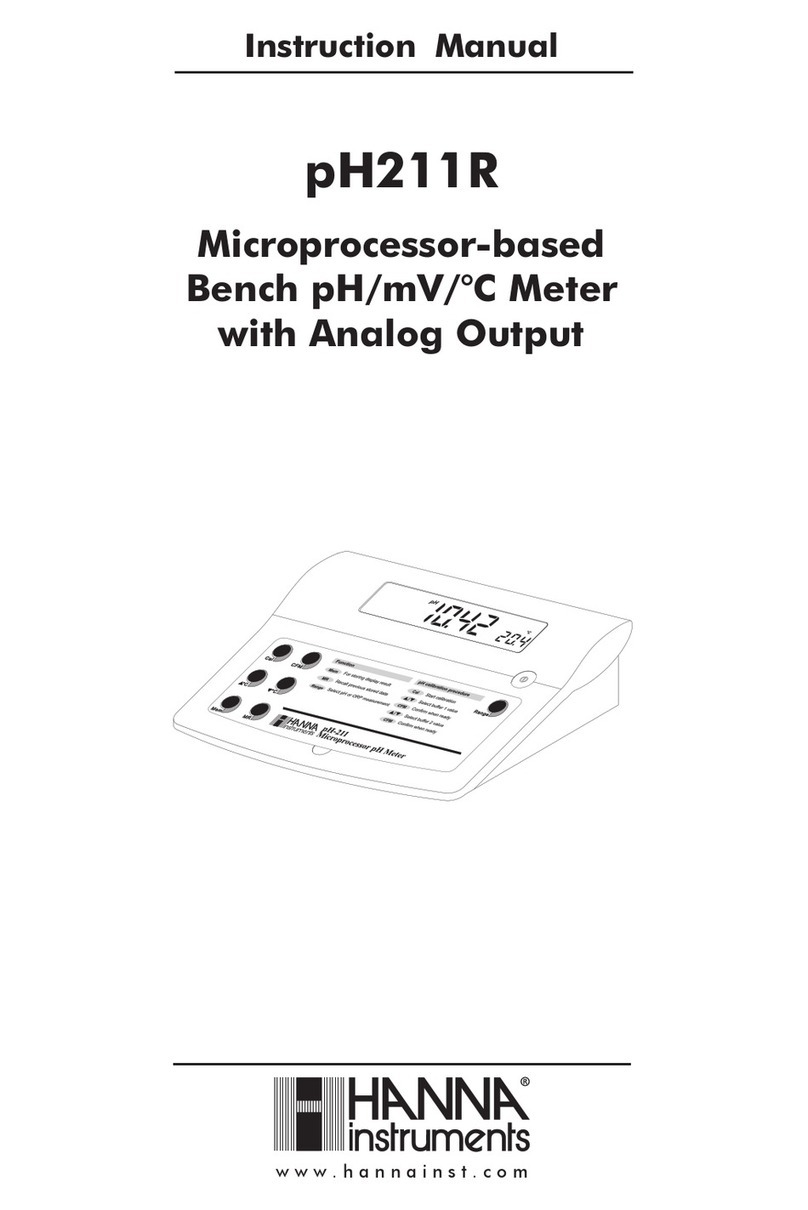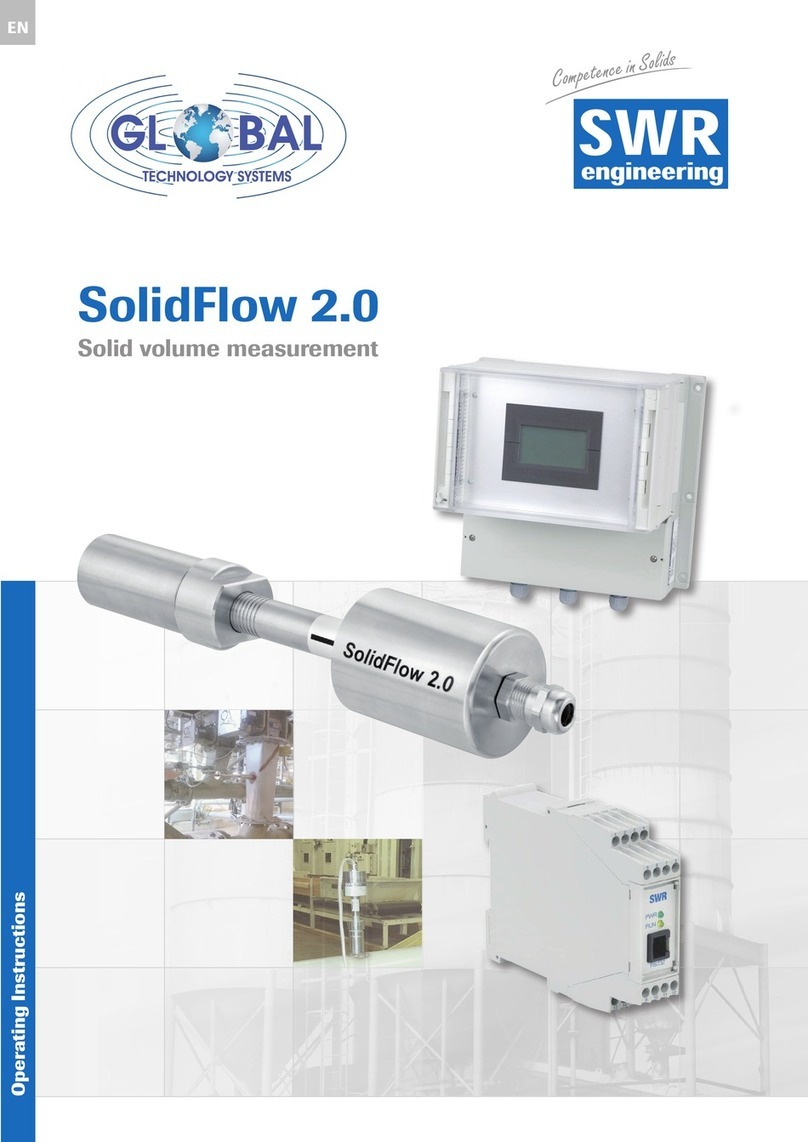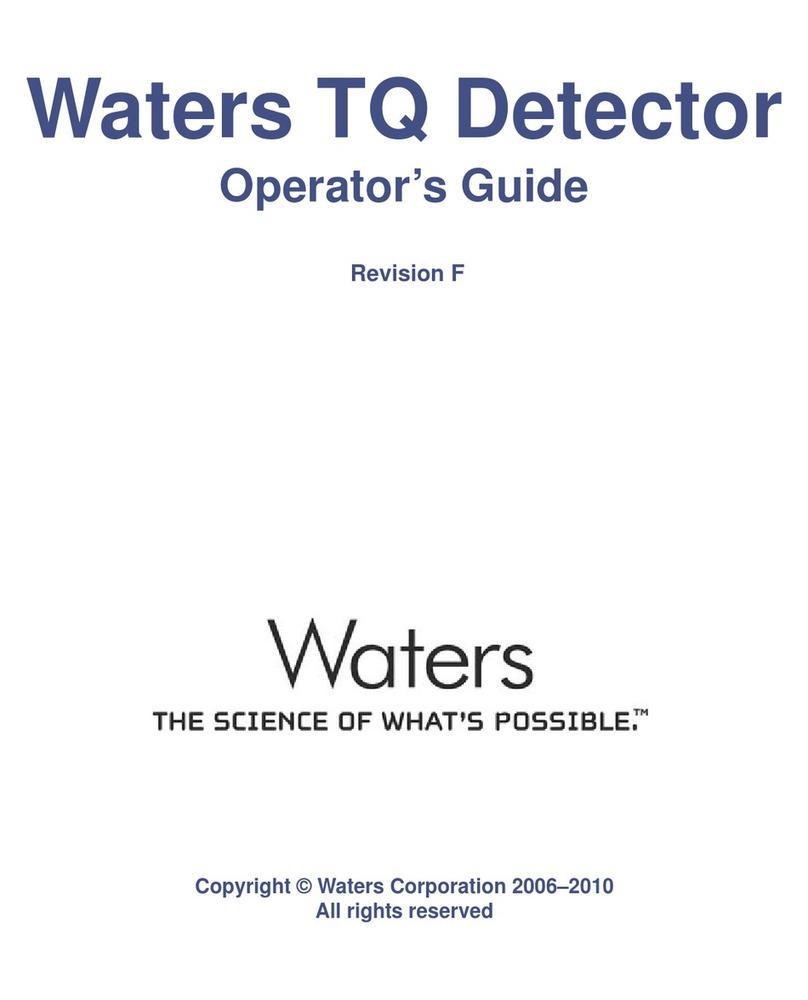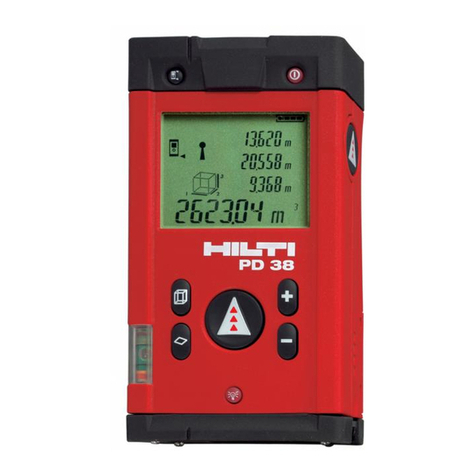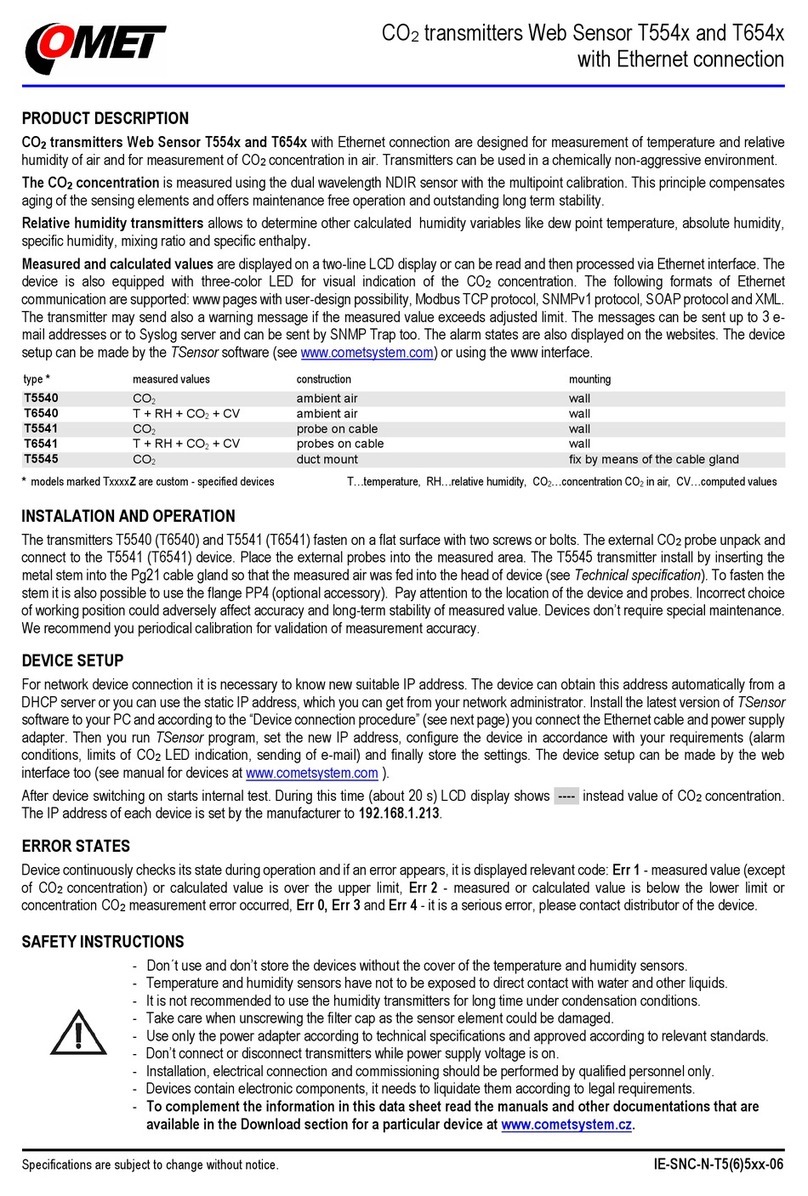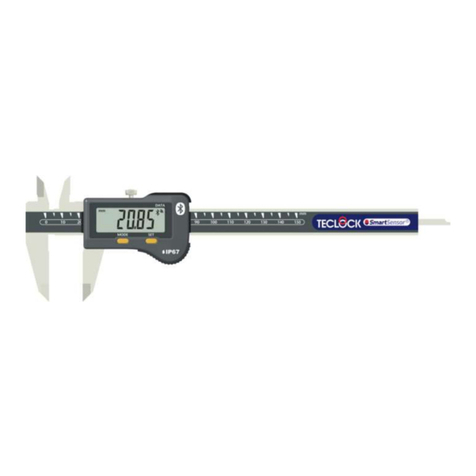DIS Sensors QG65D User manual

1-Feb-2101/02/2021
USER MANUAL
QG65D CANopen Dynamic Inclinometer
(Type H)
V2.3, Mar-22

Page 1of 50
User Manual - QG65D CANopen Dynamic Inclinometer (Type H) V2.3
Table of Contents
1. Safety information .....................................................................................................................................................3
1.1. Intended use......................................................................................................................................................3
1.2. Incorrect use...................................................................................................................................................... 3
1.3. Sensor defective ................................................................................................................................................ 3
2. About this manual......................................................................................................................................................4
2.1. Intended use......................................................................................................................................................4
2.2. Symbols used in the text ...................................................................................................................................4
2.3. Copyright ........................................................................................................................................................... 4
2.4. Document revision control................................................................................................................................ 5
3. Quick reference..........................................................................................................................................................6
4. Installation guide........................................................................................................................................................ 7
4.1. Mechanical drawing ..........................................................................................................................................7
4.2. Mounting........................................................................................................................................................... 7
4.3. Connection ........................................................................................................................................................8
4.4. CAN termination................................................................................................................................................9
5. Technical data ............................................................................................................................................................9
6. Functional description.............................................................................................................................................. 10
6.1. Dynamic inclination measurement principle...................................................................................................10
6.2. Measuring axis and direction ..........................................................................................................................11
6.2.1. Measuring axis and direction for Inclination ..........................................................................................11
6.2.2. Measuring axis and direction for acceleration .......................................................................................12
6.2.3. Measuring axis and direction for gyroscope........................................................................................... 12
6.3. Signal processing .............................................................................................................................................13
6.3.1. Sampling rate..........................................................................................................................................13
6.3.2. Sensor fusion algorithm..........................................................................................................................13
6.3.3. Digital filters............................................................................................................................................ 13
6.4. Function mode ................................................................................................................................................14
6.5. Application profiles .........................................................................................................................................15
6.6. Output format ................................................................................................................................................. 16
6.7. Boot-up procedure ..........................................................................................................................................17
6.8. Emergency message ........................................................................................................................................ 17
6.9. LSS (Layer Setting Service, according to CiA305-DSP) .....................................................................................18
6.10. Firmware management ...................................................................................................................................19
6.11. Load factory default settings........................................................................................................................... 20
6.12. Zero adjustment ..............................................................................................................................................21
6.13. EDS & DCF........................................................................................................................................................21
6.14. Mappable objects............................................................................................................................................22
7. CANopen specification ............................................................................................................................................. 23
7.1. CANopen Communication Objects (COB)........................................................................................................ 23
7.2. Predefined CAN-IDs.........................................................................................................................................23
7.3. PDO (Reading sensor output)..........................................................................................................................24
7.4. SDO (configuring Object Dictionary) ...............................................................................................................24
7.5. NMT state........................................................................................................................................................ 25
7.6. Object Dictionary (device parameters) ...........................................................................................................25
8. CAN Object dictionary overview ..............................................................................................................................26
8.1. Communication profile (Index 1000h - 1FFFh)................................................................................................ 26
8.1.1. Object 1001hError register.....................................................................................................................28
8.1.2. Object 1002hManufacturer status register............................................................................................28
8.1.3. Object 1003hPredefined error field .......................................................................................................29
8.1.4. Object 1005hCOB-ID SYNC message ......................................................................................................29
8.1.5. Object 1006hCommunication cycle period ............................................................................................ 29

Page 2of 50
User Manual - QG65D CANopen Dynamic Inclinometer (Type H) V2.3
8.1.6. Object 1010h Store parameters ..............................................................................................................30
8.1.7. Object 1011hRestore factory default parameters.................................................................................. 30
8.1.8. Object 1014hCOB-ID EMCY ....................................................................................................................31
8.1.9. Object 1020hverify configuration........................................................................................................... 31
8.1.10. Object 1029herror behaviour................................................................................................................. 31
8.1.11. Object 1800h, 1801hTPDO communication parameter..........................................................................32
8.1.12. Object 1A00h, 1A01hTPDO Mapping parameter ....................................................................................32
8.1.13. Object 1F80hNMT start-up behaviour....................................................................................................33
8.2. Manufacturer-specific profile (2000h - 5FFFh)................................................................................................34
8.2.1. Object 3004hApplication profile ............................................................................................................36
8.2.2. Object 3007hFunction mode.................................................................................................................. 36
8.2.3. Object 300Fh Zero adjustment Inclination .............................................................................................36
8.2.4. Object 301Eh Manufacturer status register error mask..........................................................................37
8.2.5. Object 301Fh Manufacturer status register mapping .............................................................................37
8.2.6. Object 3021h~ 3027hUser-adjustable parameters for application profile ............................................ 38
8.2.7. Subindex 06hOutput filter......................................................................................................................38
8.2.8. Subindex 07h, 08hMoving average filter TPDO1 and TPDO2 ..................................................................38
8.2.9. Object 3032hSub Range Limits...............................................................................................................39
8.3. Application profile (6000h –9FFFh) (CiA410)..................................................................................................40
8.3.1. Object 6000h Resolution .........................................................................................................................41
8.3.2. Object 6011h, 6021hOperating parameter ............................................................................................. 41
8.3.3. Object 6012h, 6022hPre-set inclination value.........................................................................................41
8.3.4. Object 6013h, 6023hOffset inclination value.......................................................................................... 41
8.3.5. Object 6401hSensor outputs..................................................................................................................42
8.4. Data type .........................................................................................................................................................42
9. Configuration tool ....................................................................................................................................................43
9.1. Configuration kit..............................................................................................................................................43
9.2. PC software .....................................................................................................................................................45
10. Abbreviations and definitions ..................................................................................................................................50
11. Normative references ..............................................................................................................................................50

Page 3of 50
User Manual - QG65D CANopen Dynamic Inclinometer (Type H) V2.3
1. Safety information
1.1.Intended use
The QG65D CANopen Dynamic Inclinometer is a MEMS-based inclination sensor with CANopen interface. This device
provides precise and reliable inclination measurements in both static and dynamic conditions. The use of this device
in a machine or system is permitted only under the following conditions:
•The user is trained and competent in integrating and using inclination sensors in machinery.
•The user is familiar with the contents of both the datasheet and user manual.
•The user has a full understanding of CAN and CANopen.
•The device is used within the specified environmental conditions.
•The device is properly configured for its intended use.
•The device is mounted correctly as described in the datasheet and user manual.
•The device data is expressly not interpreted as safety data, except when used redundantly in a control system that is
designed and tested for cross-check functionality between the primary and redundant devices.
1.2.Incorrect use
•Use of non-standard CAN cables.
•Device mounted incorrectly.
•Zero adjustment outside the specified range.
•Incorrect or absent CAN bus termination.
•Device used outside the specifications.
1.3.Sensor defective
The sensor is considered “defective” when
•No CAN output can be detected.
•An emergency message with sensor error information is detected. (→ 6.8 Emergency message)
In the event of uncertainty, contact the distributor or manufacturer. Any unauthorised modification or unapproved
use will void both the warranty and any liability on the part of the manufacturer.

Page 4of 50
User Manual - QG65D CANopen Dynamic Inclinometer (Type H) V2.3
2. About this manual
2.1.Intended use
This manual applies solely to the QG65D CANopen dynamic inclinometer (Type H) with the following model
designations:
•QG65D-KIXv-360H-CAN-C(F)M-UL —— 1 axis, ± 180°, vertical mounting, high accuracy
•QG65D-KDXYh-090H-CAN-C(F)M-UL —— 2 axes, ± 90°, horizontal mounting, high accuracy
•QG65D-KDXYh-030H-CAN-C(F)M-UL —— 2 axes, ± 30°, horizontal mounting, high accuracy
•QG65D-KIXv-360-CAN-C(F)M-UL —— 1 axis, ± 180°, vertical mounting, std. accuracy
•QG65D-KDXYh-090-CAN-C(F)M-UL —— 2 axes, ± 90°, horizontal mounting, std. accuracy
•QG65D-KDXYh-030-CAN-C(F)M-UL —— 2 axes, ± 30°, horizontal mounting, std. accuracy
DIS product code can be identified here.
2.2.Symbols used in the text
h
Subscript for hexadecimal values.
d
Subscript for decimal values.
Caution that indicates either potential damage to the sensor or explains how to
avoid a problem.
Important information.
→
Cross-reference
2.3.Copyright
© Copyright 2022 DIS Sensors bv.
This manual is subject to change without notice.
All rights according to the copyright remain explicitly reserved for DIS Sensors bv.

Page 5of 50
User Manual - QG65D CANopen Dynamic Inclinometer (Type H) V2.3
2.4.Document revision control
Version
Date(y-m-d)
Revision
V1.0
2020-11-27
1st release.
V2.0
2021-7-2
Correct a few errors in 6.11 and 6.12.
The picture of the configurator is updated.ac
Extra description of the power adaptor convertor.
Add E4 certification. Power supply description corrected.
Object 1002 error description changed to “bit description”
(8.1.2).
add subindex 04 to object 1010 and 1011 (8.1.6, 8.1.7).
add rotation speed to describe the application profile (6.5).
add zero offset/value to Load default description (6.11).
Added 6.14 and 8.3.1
Added 2 missing error codes in 6.8
Corrected objects sequence in mode 2. (Temperature as the
1st object)
Added message structure of object 1003h.
Correct screen resolution of PC application.
Correct command SYNC.
Add std. accuracy model.
V2.1
2021-8-9
Configurator power adaptor is needed when more than 1
sensor is connected.
V2.2
2021-11-5
Add DIS footer.
Add measuring range acceleration.
Improved the format.
Correct a typo in 6.5 application profile
V2.3
2023-03-08
Resolution configurable
Subrange is configurable for the 1-axis model.
PC Application display resolution reduced to 1360x768p
Improved description boot-up procedure
Table 1 - Document revision

Page 6of 50
User Manual - QG65D CANopen Dynamic Inclinometer (Type H) V2.3
3. Quick reference
General
•1-axis ± 180° and 2-axes ± 30°/± 90° dynamic inclinometer
•Output type: CANopen
•Inclination, acceleration, gyroscope outputs defined by Function modes (→ object 3007h)
•4 application profiles for inclination measurement in specific applications (→ object 3004h)
•Sensor outputs can be customised using TPDO mapping parameters (→ object 1A00h)
•Internal sample rate MEMS: 1000Hz; output rate: 100 Hz
•Dynamic inclination application limitations: max. acceleration 1.5 g, max. angle rate 500°/s
•Output filter: adjustable 1st order LPF (→ sub-index 06hof object 3021hto 3024hor object 300Eh)
•Moving average filter: averaging time interval adjustable from 10 ms to 100 ms (→ sub-index 07hof object
3021hto 3024hor object 300Dh)
•An optional configurator is available.( →DIS website)
•Approved for automotive use, approval number: E4-10R-05-4662
CAN, CANopen
•CAN interface: CAN2.0 A/B (compliant with ISO11898-1&2)
•CANopen application layer and communication profile: EN50325-4 (CiA301 v4.0 and 4.2.0)
•CANopen device profile for inclinometer: CiA410
•LSS (Layer Setting Service) implemented
•TPDO1 (CAN-ID: 180h+ Node ID) and TPDO2 (CAN-ID: 280h+ Node ID)
•Outputs: inclination X-axis (longitudinal) in object 6010h; inclination Y-axis (lateral) in object 6020h
•Internal switchable CAN termination resistor: default off (→ object 3003h)
•CAN bus bit rate: default 250 kbit/s (→ object 3001h)
•Node ID: default 01h(→ object 3000hrange: 01h~ 7Fh, max. 127 nodes)
•Heartbeat: default on, 2 s (→ object 1017h)
•Two modes of PDO transmission (→ object 1800h / 1801h)
- Event mode: default on, event timer default 100 ms (range 10 ms ~ 500 ms)
- Sync mode: default off
•Vendor ID: 000001BDh DIS Sensors (→ object 1018h)
•Firmware version available via CAN Object Dictionary (→ object 1018h)
•Serial number format: xxxxxx-xxx (→ object 1018h)
•Zero adjustment of inclination available via CAN Object Dictionary (→ object 300Fh).
•Pre-set inclination setting available via CAN Object Dictionary (→ objects 6012h and 6022h).
•Bootup in NMT Operational state (→object 1F80h)
•Negative values: two’s complement
•Byte-sequence on CAN bus: little-endian (least significant byte first)

Page 7of 50
User Manual - QG65D CANopen Dynamic Inclinometer (Type H) V2.3
4. Installation guide
4.1.Mechanical drawing
Figure 1 - Mechanical drawing of QG65D with a male M12.
4.2.Mounting
•Use the 4 screws provided (M5x25 mm zinc plated steel Pozidrive pan head screws with self-tapping PZ
DIN7500CZ) to mount the device.
•If a software zero adjustment is impossible or undesirable, DIS provides an optional reference solution of
replacing 2 of the provided screws with 2 optional 4mm Ø positioning pins, which can serve as a
mechanical reference.
•Tightening torque max. 2.5 Nm. A higher torque can cause damage to the housing or the internal
electronics.
•Fix the sensor to a perfectly flat surface.
•A 1-axis inclinometer must be mounted vertically. The factory default zero position is with the male
connector pointing down as shown in Figure 3. The sensor can be zero adjusted at any position within the
full range.
•A 2-axis inclinometer must be mounted horizontally. The factory default zero position is shown in Figure 2.
After installation, the sensor can be zero adjusted to eliminate the mechanical offsets within a ±5° offset
range.
Figure 3 - Vertical mounting 1-axis inclination
Figure 2 - Horizontal mounting 2-axes inclination

Page 8of 50
User Manual - QG65D CANopen Dynamic Inclinometer (Type H) V2.3
4.3.Connection
The sensor is equipped with either a single 5-pole M12 (A-coded) male connector according to IEC 61076-2-101, or
with an additional 5-pole M12 (A-coded) female connector. This is specified in the suffix of the device model
designation: suffix CM indicates a single male connector; suffix CFM indicates both a female and a male connector.
The advantage of two connectors is that devices can be daisy-chained in the CAN network. The voltage supply is
forwarded from the male to the female connector, providing both power and bus connection to the next sensor with
a single cable harness. The connection between male and female connectors acts as an internal T-junction.
The pin assignment is according to CiA 303-1 V1.8.0.
Pin
Assignment
Pin 1
Shield
Pin 2
Vcc
Pin 3
Gnd & CAN_GND
Pin 4
CAN_H
Pin 5
CAN_L
Figure 4 - Pin definition
•The maximum current for the internal T-junction is 2.5 A. This must be taken into account when using daisy-chained
connections.
•The voltage supply must be dimensioned to prevent exceeding the specified voltage limits.
•The power consumption is about 50mA typical.
•This device must be connected to a class 2 power supply.
•Connect the sensor only to an approved CAN controller which must have a grounded shield. Alternative: connect the
sensor housing to a grounded shield. All mentioned EMC standards that are met (see Declaration of Conformity) have
been done with the housing connected to a grounded shield.
Installation of wiring and the opening and closing of electrical connections must only be carried out in a de-energized
state! Short-circuits, voltage spikes, etc. can cause malfunctions and/or cause the installation to become uncontrolled,
creating a serious risk of injury or damage to property.

Page 9of 50
User Manual - QG65D CANopen Dynamic Inclinometer (Type H) V2.3
4.4.CAN termination
A CAN bus should be terminated properly to prevent signal reflections. The QG65D CANopen dynamic Inclinometer
has an internal 120 Ohm termination resistor. By default, this is disabled, but it can be enabled with object 3003h.
A separate M12 termination resistor and T-connector are also available as accessories for CANopen devices.
Figure 5 - M12 CAN terminator male 5p.
Order code: 10217
Figure 6 - M12 CAN terminator female 5p.
Order code: 10194
Figure 7 - M12 T-connector 5p.
Order code: 11822
The advantage of using a separate termination plug instead of the internal termination resistor is that an external
termination plug is clearly visible. This helps to prevent an inadvertent double termination that could cause the
entire CAN bus to malfunction.
5. Technical data
Please refer to the datasheet of your product.

Page 10 of 50
User Manual - QG65D CANopen Dynamic Inclinometer (Type H) V2.3
6. Functional description
6.1.Dynamic inclination measurement principle
Conventional inclinometers measure inclination by measuring g-forces using an accelerometer. In static conditions,
inclination measurement by this principle is accurate and reliable. However, the vibrations or movements present on
almost all industrial machines generate undesirable g-forces. These dynamic g-forces accumulate and overlay the
static g-forces, causing a ‘dirty’ inclination output that includes spurious or noise components.
In certain applications, a low-pass filter can be used to stabilize the output. The downside of this filtering is that it
significantly increases the inclinometer’s reaction time (latency). In a control system, this results in a limit on the
speed of movements, and reduced machine efficiency.
A gyroscope measures the speed of rotation, which can be integrated to get the actual inclination value. But
gyroscopes are subject to bias drift, integrating constant bias will cause angular errors and these errors will
accumulate over a long term. Therefore, this calculation is only accurate for a relatively short period.
The QG65D dynamic inclinometer combines accelerometer MEMS and gyro MEMS. This device is unaffected by
vibration or movement, and can therefore measure the true angle at the sensor position in real-time. Our smart
algorithms (such as Kalman filtering) within the device can determine the balance between the accelerometer MEMS
(best result in static situations) and the gyro MEMS (best result in dynamic situations).
Figure 8 - Measurement principle of the dynamic inclinometer
Acceleration MEMS
Gyroscope MEMS
Smart algorithm

Page 11 of 50
User Manual - QG65D CANopen Dynamic Inclinometer (Type H) V2.3
6.2.Measuring axis and direction
6.2.1. Measuring axis and direction for Inclination
A single-axis inclinometer (vertical mount) measures the inclination in the vertical plane over the full range
±180° (or 0-360°) (X-output). The default 0° position and the measuring direction are shown in Figure 9 - Measuring
axis and direction of 1-axis inclination.
Figure 9 - Measuring axis and direction of 1-axis inclination.
A dual-axis inclinometer (horizontal mount) measures the inclination on both X and Y axis. The measuring range
is up to 90°. Due to the measurement principle, only one axis may tilt more than 45°.
Figure 10 –Measuring axis and direction of 2-axis inclination.
Cross-tilt error: when the cross axis (axis perpendicular to the measuring axis) tilts more than 45° during the measurement,
the measuring axis will be disabled. The sensor will send a fixed CAN output to indicate that the sensor is now at a cross-tilt error
position (→Knowledgebase): 20000d(200°) for the measuring range ±180°, ±30°/ ±90°, and 40000d(400°) for the measuring range
0°-360°. In addition, an EMCY message will also be sent, in which the last 5 bytes (00 00 00 00 01/02h) specifies the cross-tilt error
on the X or Y axis (→Object 1002h Manufacturer status register).

Page 12 of 50
User Manual - QG65D CANopen Dynamic Inclinometer (Type H) V2.3
6.2.2. Measuring axis and direction for acceleration
In acceleration mode (→6.4 Function mode), the device measures the acceleration values on all 3 axes. The
measuring direction of three axes in the factory default setting is shown in Figure 11.
Figure 11 –Measuring axis and direction of acceleration
The high accuracy model has a measuring range of ±1.5g, while the standard accuracy model has ±2g.
6.2.3. Measuring axis and direction for gyroscope
In gyroscope mode (→6.4 Function mode), the sensor measures the angular rate on all 3 axes. The measuring
direction of three axes in the factory default setting is shown in Figure 12.
Figure 12 - Measuring axis and direction of the gyroscope

Page 13 of 50
User Manual - QG65D CANopen Dynamic Inclinometer (Type H) V2.3
6.3.Signal processing
6.3.1. Sampling rate
Each axis of the acceleration and gyroscope MEMS is sampled by the internal microcontroller at a rate of 1000 Hz.
Those samples are then processed and fed into the sensor fusion algorithm.
6.3.2. Sensor fusion algorithm
The sensor fusion algorithm transforms the raw MEMS outputs into a reliable inclination value. Based on the
selected function mode, application profile, and user-adjustable parameters, the smart algorithm will combine the
accelerometer and gyroscope outputs in a balanced way optimised for your application. The limitations for the
sensor fusion algorithm are: acceleration max 1.5 g, angular rate max. 500°/s. The calculation rate, and therefore
also the output rate, is 100 Hz.
6.3.3. Digital filters
To eliminate noise or reduce the bandwidth, the inclination values can be further processed with extra digital filters.
In each application profile, those filters can be enabled and configured using the DIS QG65D configurator, or with the
CAN object dictionary.
Output filter
A 1st order low-pass filter is implemented for the reduction of bandwidth and filtering noise. Each application profile
has its own default filter settings, which can be set via subindex 06hof CAN object 3021hto 3024h. Another way to
control the filter settings for the currently active application profile is via object 300Eh. The value you set with 300Eh
will also be written to the corresponding object for that active application profile (object 3021h~ 3024h). The filter
settings are effective on all sensing axes, but by default they are disabled.
By setting a time-constant τ (time in which the output changes to 70% of the step after a step response), the -3 dB
frequency can be calculated by the formula f = 1 / (2π*τ). A longer filter time results in a narrower bandwidth and
therefore less noise but also causes a longer phase delay.
This -3 dB frequency is independent of TPDO event time. However, when the output filter time-constant is set to a
value lower than the TPDO event time, the output filter is automatically disabled. For example, if TPDO event time is set
to 100 ms, and output filter time is set to 50 ms, this filter will not work.
MEMS Sampling
•6 DOF raw outputs
•Sampling rate 1000Hz
Fusion Algorithm
•Function mode
•Application profiles
•User adjustable parameters
•Calculation rate 100Hz
•Max. angular rate 500°/s
•Max. acceleration 1.5/2.0g
Digital Filters
•Output filter
•Moving average filter

Page 14 of 50
User Manual - QG65D CANopen Dynamic Inclinometer (Type H) V2.3
Moving average filter
The final inclination output is an average of the last N samples. The sampling rate of this filter is 10 ms. The various
application profiles have different default filter settings. This filter can be controlled via CAN object 3021hsubindex
07hto 3024hsubindex 07h. It can also be controlled for the active application profile via CAN object 300Dh. In this
case, the sensor will update the correct object of the active application profile (in the range 3021hsubindex 07hto
3024hsubindex 07h). The moving average filter is disabled in the factory default application profile 1.
N must be a number from 0d -10d. Setting the N to 0dand 1d will disable this filter.
The TPDO event timer decides the cycle time of the TPDO message. By default, the sensor sends a new TPDO every
100 ms. This TPDO message contains an inclination measurement which is an average of the preceding N x 10ms
samples and is independent of the TPDO event time.
Example:
TPDO event timer = 50 ms, N = 7: every 50 ms, a new average inclination value from the previous 70 ms samples will be
supplied in the TPDO message.
6.4.Function mode
The QG65D can measure inclination, acceleration and rotation. By selecting the function mode via object 3007h, the
sensor is configured to function as an inclinometer, accelerometer, gyroscope, or a fusion sensor. Once a function
mode is selected, the TPDO mapping parameters (→8.1.12, page 32) are automatically configured with the
predefined objects and object entries. The user can also define the TPDO mapping objects manually; the function
mode is then changed to Mode FFh (user defined mode).
Function
mode
Output
TPDO mapping objects
Mode 0
(default)
Inclination (CiA410)
TPDO1: 6010h- 00h (1-axis model)
TPDO1: 6010h- 00h, 6020h- 00h (2-axis model)
TPDO2: disabled
Mode 1
Inclination (CiA410) alternative
orientation
TPDO1: 6010h- 00h (1-axis model inverted)
TPDO1: 6020h- 00h, 6010h - 00h
(2-axis model with X and Y swapped, X and Y inverted)
TPDO2: disabled
Mode 2
Inclination (CiA410) + Temperature
TPDO1: 6511h -00h, 6010h- 00h (1-axis model)
TPDO1: 6511h -00h, 6010h- 00h, 6020h- 00h, (2-axis model)
TPDO2: disabled
Mode 3
Acceleration (3 axes)
(Pure acceleration without dynamic
effects compensation)
TPDO1: 6401h -01h, 6401h -02h, 6401h -03h
TPDO2: disabled
Mode 4
Gyroscope (3 axes)
TPDO1: 6010h- 07h, 6010h- 08h, 6010h- 09h
TPDO2: disabled
Mode 5
Mode 0 + Mode 3 + Mode 4
(Inclination + Acceleration + gyroscope)
TPDO1: 6010h- 00h, 6020h- 00h, 6401h -01h, 6401h -02h
TPDO2: 6401h -03h, 6401h- 07h, 6401h- 08h, 6401h- 09h
Mode FF
User defined mode
(Output defined by the user)
TPDO1: user defined
TPDO2: user defined
Table 2 –Sensor output configuration in different function modes.

Page 15 of 50
User Manual - QG65D CANopen Dynamic Inclinometer (Type H) V2.3
6.5.Application profiles
The use of application profiles is the best practice for inclination measurement in various applications. Each profile
has a unique combination of parameters that balance the processing between acceleration MEMS and gyroscope
MEMS, to produce the best measurement quality for that application.
Four application profiles are provided that can be configured via CAN object 3004h. As they are intended to improve
the inclination measurement, the profiles are only effective in a function mode where the inclination outputs are
valid (mode 0, 1, 2, 5 and FF). For each profile, two parameters are available for optimisation of the outputs.
Application profile
Applications
User-adjustable parameters
Default
Profile 0
Static
Non-dynamic applications (Gyroscope is
disabled)
Object 3021
Output filter
Moving average filter
100 ms
10
Profile 1
Dynamic (fast mode)
(factory default)
Dynamic applications with moderate to
fast movements/vibrations such as
excavation, start/stop driving, rotation
>10°/s rotation, etc.
Object 3022
Output filter
Moving average filter
0ms = Disabled
0 = Disabled
Profile 2
Dynamic (slow mode)
Dynamic applications with slow
movements/ vibrations such as cranes,
platforms, scissor lifts, rotation
<10°/s rotation, etc.
Object 3023
Output filter
Moving average filter
50 ms
10
Profile 3
Dynamic (platform
levelling)
Dynamic applications with minor
movements/vibrations such as platform
levelling, etc.
Object 3024
Output filter
Moving average filter
100 ms
10
Table 3 - Application Profiles
User adjustable parameters
Function
Value
Output Filter
(subindex 06h)
1st order LPF filter for all sensing axes.
(→6.3.3 Digital filters)
Value range: 0d~ 10 000d (ms)
A longer filter time results in a smoother reaction on
peaks/accelerations, but also a slower reaction to
physical movements.
Moving average filter
TPDO1, TPDO2
(subindex 07h, 08h)
Moving average filter for filtering noise. (→
6.3.3 Digital filters)
N value range: 0d~ 10d
A greater N (number of samples) results in less noise
and a smoother output, but also a slower reaction to
physical movements.
Table 4 –User adjustable parameters for application profiles.
The user adjustable parameters can be fine-tuned for the existing application profiles via CAN object 3021h ~ 3024h,
while objects 3025h~ 3027hare reserved for future profiles.
These parameters are also easily adjusted in the configuration panel of the QG65D configurator (Figure 13).
Figure 13 - Application profile in the configuration panel

Page 16 of 50
User Manual - QG65D CANopen Dynamic Inclinometer (Type H) V2.3
6.6.Output format
Inclination output format with factory default resolution: CAN output = 100*α. (α = angle in degrees, factory
resolution is 0.01°). The resolution can be configured with object 6000h. CAN outputs are sent with PDOs (→7.3 PDO
(Reading sensor output).
For example:
Figure 14 - Output 1-axis ±180° sensor
Figure 15 - Output 2-axis ±90° sensor
In Figure 14, the sensor sends 1 axis inclination output with 2 Bytes Integer (Table 5).
Byte1
Byte0
23h
82h
Inclination output: 2382h= 9090d = 90.9°
Table 5 - Output 1-axis ±180° sensor
In Figure 15, the sensor sends 2 axis inclination outputs with 4 bytes integer. The 1st two bytes are the X inclination
and the 2nd two bytes are the Y inclination (Table 6).
Byte3
Byte2
Byte1
Byte0
Y inclination
X inclination
00h
82h
0Bh
C8h
0080h = 130d= 1.3°
0BC8h= 3016d= 30.16°
Table 6 - TPDO1 of QG65D-KDXYh-090H-CAN-C(F)M
Besides inclination values, the device also provides acceleration, angular rate and device temperature.
The acceleration output contains acceleration of all three axes. “High accuracy” model has a measuring range of
±1,5g and 10Hz as -3dB cut-off frequency, while “Standard accuracy” model has a measuring range of ±2g and 50Hz
instead. The raw acceleration output has a resolution of 1mg, while the dynamic compensated acceleration has a
resolution of 0.1mg. Therefore, the outputs format is different.
Figure 16 - Raw acceleration output
Figure 17 - Dynamic compensated acceleration output

Page 17 of 50
User Manual - QG65D CANopen Dynamic Inclinometer (Type H) V2.3
The user can customise the device outputs by changing the TPDO mapping parameters. (→Object 1A00h, 1A01h
TPDO Mapping parameter).
For example, 1st two bytes are the device temperature, the 2nd two bytes are the inclination output (Table 7).
Byte3
Byte2
Byte1
Byte0
23h
82h
00h
1Ah
Inclination output: 2382h= 9090d = 90.9°
Device temperature: 001Ah = 26d °C
Table 7 - Customised TPDO message
6.7.Boot-up procedure
When the device is powered on, it automatically enters NMT Initialisation state. In this state, the device will be
initialised with the last stored parameters of the manufacturer-specific profile area and of the standardized device
profile area. When initialisation is complete, a bootup message 00hwill be sent with the heartbeat (700h+ Node ID).
If an error is detected during the bootup, an emergency message with the error information will be sent.
After that, the sensor will switch to either “Operational” (default) or “Pre-operational” mode, depending on the
value of object 1F80h.
6.8.Emergency message
When the device detects an internal error, an emergency object (80h+Node ID) with an 8-bytes message is
transmitted. The error code is inserted at the location of object 1003h (pre-defined error field), and the device
enters the error state which is defined in Object 1029hError Behaviour (default: NMT pre-operational state).
The first 3 bytes indicate error code specified in CiA301 and the error register specified in Object 1001h. The
remaining 5 bytes indicate the manufacturer-specific error specified in Object 1002h.
Byte7
Byte6
Byte5
Byte4
Byte3
Byte2
Byte1
Byte0
Manufacturer-specific error (1002h)
Error register (1001h)
EMCY error code (CiA301)
00 00 00 00 00h =no error
00 00 00 00 01h =X-axis Cross-Tilt Error
00 00 00 00 02h =Y axis Cross-Tilt Error
00 00 00 00 08h= EEPROM error
More:
→ 8.1.2 Object 1002h Manufacturer status register
00h =no error
01h= Generic error
05h = Voltage error
81h= Manufacturer specific error
More:
→ 8.1.1 Object 1001h Error register
00 00h =No error. Always sent at start-up
10 xxh = Generic error
50 00h= Voltage error
50 10h = Self-test error
50 30h= Error during sensor initialization
60 00h = Watchdog error
60 00h = Error handler activated
62 00h = Device software error
80 00h = Sent at every change of the
manufacturer status register
81 xxh = CANopen stack message
82 xxh = CANopen stack message
FF 20h = EEPROM error
Table 8 –format EMCY message
Examples:
00 00 00 00 01 05 50 00h—Voltage error detected during initialization
00 00 00 00 01 81 80 00h—Cross-tilt error on X axis

Page 18 of 50
User Manual - QG65D CANopen Dynamic Inclinometer (Type H) V2.3
When all errors are corrected, the device enters the error-free state and transmits an emergency object with the
error code ‘reset error / no error’ containing all 0 s.
6.9.LSS (Layer Setting Service, according to CiA305-DSP)
Layer setting services (LSS) and protocols are used to request or change the settings of three parameters of the
physical layer, data link layer, and application layer on a CANopen device via the CAN network. It is supported only in
NMT stop mode or pre-operational mode.
The QG65D device is serviced as a CAN device, and a CAN master such as a PLC can detect and configure those three
parameters with LSS:
•Node ID (→object 3000h)
•CAN bus bit rate (→object 3001h)
•LSS address: 128-bit number to identify each node uniquely, consisting of the vendor ID, product code, revision
number, and serial number with 32 bits each (→object 1018h)
After changing parameters using LSS, a save action must be performed. Normally your LSS tool can be configured to
perform an automatic save (store), as shown below:
Figure 18 - LSS save action.

Page 19 of 50
User Manual - QG65D CANopen Dynamic Inclinometer (Type H) V2.3
6.10. Firmware management
If a firmware version is mentioned on the label, it is the factory-installed firmware number.
Figure 19 - Firmware version
It can also be requested with object 100AhManufacturer software version. The message format is “Vx.x.x” in ASCII,
for example: V1.0.0.
The currently-installed firmware version might vary from the version on the sticker due to a firmware update. Always check
the actual version in the object dictionary.
It will soon be possible to update the firmware via the DIS configuration tool. This tool can check the current
firmware version in your device and upload the new firmware to the device. The user can upload the new firmware
to the device by simply clicking a button (Figure 20).
Figure 20 - Firmware update via configurator
The firmware release notes are available at www.dis-sensors.com under “downloads/user manuals”.
Other manuals for QG65D
2
Table of contents
Other DIS Sensors Measuring Instrument manuals
